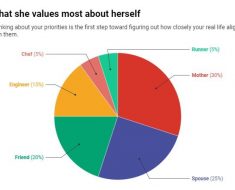Everyone wants to know the magic pill. The number one exercise that will fast forward their exercise goals and transform their body and mind in a way that they have never experienced before. With so much pressure on new mums to snap back into shape or perform some post-baby-body-transformation miracle, it’s no wonder we are on the lookout for a quick fix!
First up, I’m here to say no more. No more to the post-baby-body pressure. No more to the talk of ‘getting your pre-baby body back’ and to let you know that if the exercise you are doing to try to achieve what might actually be some very unrealistic goals is causing you to do this one thing then you could be hindering your progress in more ways than one.
Intra-abdominal pressure
Let’s talk about intra-abdominal pressure. Intra-abdominal pressure is created during all high intensity exercise, it’s created when you cough, jump, sneeze, when you squat, lunge or press those heavy dumbbells. It’s also most definitely created when you ‘brace’ or ‘tense’ your abdominal wall. Now, intra-abdominal pressure itself isn’t the problem. In fact, in some exercise environments creating intra-abdominal pressure is done on purpose to help with lifting and protecting the back. BUT if your abdominal wall and pelvic floor cannot cope with the intra-abdominal pressure that is created during these bracing or tensing movement patterns could be weakening an already weak system.
Why you should avoid “core exercises”
When you are moving back into exercise as a new mum we need to remember to stay away from the traditional bracing or tensing of the abdominals or ‘core’ that we might have been taught in the past. In fact, I go as so far as to remove those words all together in favour of more gentle phrases such as ‘activate’ or ‘awareness’ which encourages a gentler approach.
Did you also know that it is reported that 50% of women when they think they are activating (lifting) their pelvic floor are actually baring down (or pushing out) – eek! You can only imagine what that is doing if you are under a heavy squat and you consciously tense, brace or switch on your pelvic floor or core… we are now pushing out under a heavy load!

What you should do instead
So – what do we do? Although I cannot assess your pelvic floor and let you know you are doing it exactly correctly through the medium of this article (or even if I met you in person) I can offer you the thought to move into doing your pelvic floor exercises with a much softer approach; think 5% of what you think you should be doing and understand that harder is not better in this case – “less is more for pelvic floor.” Research has shown that specially designed postpartum pelvic floor muscle training is effective in the prevention and treatment of stress urinary incontinence, and the benefits of these exercises are still present one year after delivery.
You can check out a couple of videos I have on my IGTV on how to activate your pelvic floor and as I’m sure you know by now booking that visit to a Women’s Health Physiotherapist to assess both your pelvic floor and abdominal wall, AND to make sure you are activating well would be my number one recommendation in all things returning to exercise safely as a new mum.
Jen Duggard’s Body Beyond Baby is the go-to place online for women to find mum-focused fitness services that are all accredited, experienced and partnered with Women’s Health Physios so you know you are in very safe hands.
Source: Read Full Article





